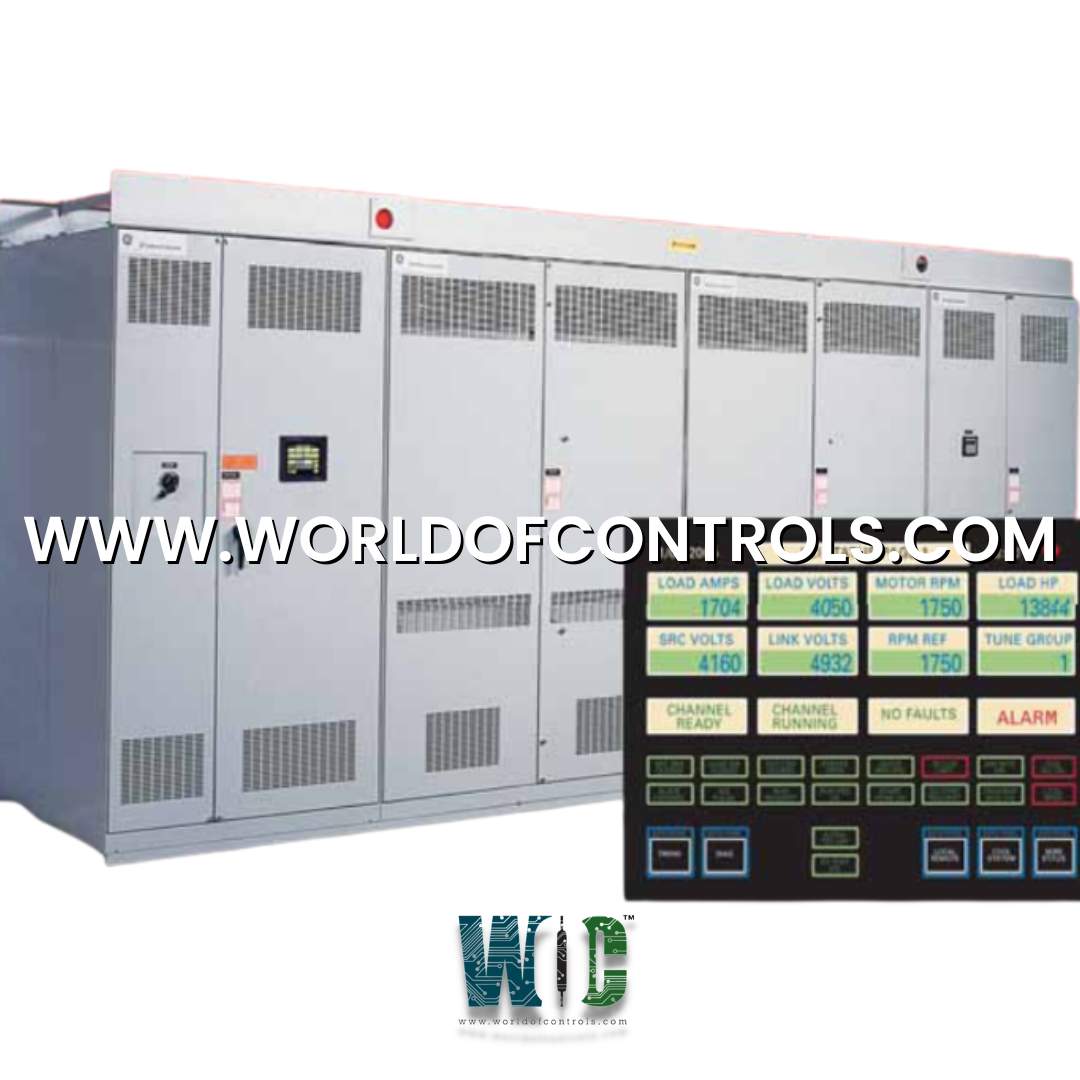
The LCI system control card is an AC adjustable-speed drive used to control the speed of a synchronous machine. The drive consists of static power conversion and microprocessor-based control equipment.
The LCI is available in bridge configurations to deliver a variety of 6 and 12-pulse combinations for different applications and power requirements. The basic LCI is a 6-pulse drive configuration that consists of two functional sections: a power converter assembly and a control assembly. The synchronous motor field is usually excited by a brushless exciter coupled to the motor shaft. The brushless exciter is a wound rotor induction motor. Its rotor voltage is rectified to supply field current to the synchronous motor. The LCI control panel includes a static excitation voltage controller to supply stator voltage for the brushless exciter. The LCI�s electronic control module gates/controls this voltage controller. Thus, it controls the excitation to produce the required machine flux. It also provides field over/ undercurrent protection. For applications with slip-ring excitation, the LCI supports the option of operating an externalexciter bridge.
The LCI power converter is made up of a rectifier that feeds an inverter through a dc link reactor. A transformer isolates the LCI from the ac system bus and provides the correct voltage at the rectifier terminals. The transformer�s internal impedance limits the magnitude of any downstream bus faults. The rectifier is a line-commutated, phase-controlled thyristor bridge that functions as a source converter. Its microprocessor-controlled gating produces a variable DC voltage output to the dc link reactor. The re-actor smoothes the current and keeps it continuous over the system�s operating range. The reactor output is fed to the inverter, which is a load commutated thyristor bridge. The inverter produces a variable frequency ac output to a synchronous mo- tor�s stator terminals.
The LCI�s rectifier and inverter bridges use the same power hardware and are both controlled by microprocessor-based electronics. Their functions can be reversed by reversing their power flow. In this case, the synchronous motor is braked by pumping its energy back into the ac line. Because of this reversing capability, the line side bridge can also be called the source converter; the machine side bridge (labeled inverter) can be called the load converter.
The synchronous motor field is usually excited by a brushless exciter coupled to the motor shaft. The brushless exciter is a wound rotor induction motor. Its rotor voltage is rectified to supply field current to the synchronous motor. The LCI control cabinet includes a static excitation voltage controller to supply stator voltage for the brushless exciter. The LCI&rsquo's electronic control gates/controls this voltage controller. This controls the excitation to produce the required machine flux. It also provides field overcurrent and undercurrent protection.
WOC has the largest stock of GE Innovation Series Gas Turbine Control System Replacement Parts. We can also repair your faulty boards. WORLD OF CONTROLS can also supply unused and rebuilt backed-up with a warranty. Our team of experts is available round the clock to support your OEM needs. Our team of experts at WOC is happy to assist you with any of your automation requirements. For pricing and availability on any parts and repairs, kindly get in touch with our team by phone or email.
DS200DDTBG1A��DS200FCGDH1A��IS200FCGEH1A��IS215UCVEM01A
What is an LCI system?
An LCI system is a power conversion system used to control the speed and torque of large motors or generators, often in applications like industrial processes, oil and gas, or renewable energy.
How does an LCI system work?
An LCI system converts AC power to DC power and then back to controlled AC power. It uses a combination of thyristors (SCRs - Silicon Controlled Rectifiers) and commutation capacitors to achieve this.
Where are LCI systems commonly used?
LCI systems are often found in industries that require precise control over electric motors or generators, such as steel mills, paper mills, mining operations, and marine propulsion systems.